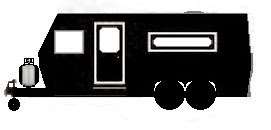Divided TTAB Panel Dismisses Oppositions: No Priority Based on Title of SIngle Work
The Board, in a split decision, granted Applicant BOL Enterprise's motion for summary judgment, dismissing Opposer Independent Media's likelihood of confusion and fraud claims. Opposer's alleged priority was based use of the mark BOL as the title of a single creative work, which the Board held was not a trademark use. Opposer's fraud claim was based on Applicant BOL's statements that it had exclusive rights in the applied-for marks despite its knowledge of Opposer's rights; however, since Opposer had no rights, those statement were not false let alone fraudulent. Independent Media Corporation (PVT.) Ltd. v.BOL Enterprise (PVT.) Ltd., Oppositions Nos. 91216909, 91216942, and 91219384 (January 14, 2016) [not precedential].
Priority: Opposer claimed prior use of the mark BOL for movies and films, pre-recorded DVDs, and the like, and for audio production services. Applicant asserted that Opposer's prior claim was based solely on a Pakistani motion picture entitled "Bol," which briefly appeared in US theaters in 2011. Applicant maintained that under the applicable precedents, use of a term as the title of a single work did not create any trademark rights, and therefore Opposer did not have priority of use.
The Board observed that the title of a single creative work is not a trademark. See, e.g., Herbko Int'l Inc. v. Kaplan Books, Inc. The name of a series of books, however, may be registered as a trademark. In re Cooper. A book title identifies a specific literary work, whereas the name of a series "has a trademark function in indicating that each book of the series comes from the same source as the others."
Opposer asserted that it used BOL not only as a movie title, but also on soundtracks from the movie [see photo above]. The panel majority found, however, that "[b]ecause of the soundtrack's association with the BOL film, and because only songs from the BOL Film are in the soundtrack or compilation of songs, Applicant has established that the soundtrack or compilation of songs is based on or derived from the same creative work, namely, the BOL Film."
In the absence of evidence demonstrating that BOL is used on at least two different creative works, we conclude as a matter of law that BOL is simply the title of essentially a single creative work. Cf., In re Arnold, 105 USPQ2d 1953, 1956 (TTAB 2013) (requiring evidence that a title is used on at least two different creative works). See also, Trademark Manual of Examining Procedure (“TMEP”) § 1202.08(c) (October 2015).
Opposer also claimed secondary meaning in the term BOL, but the Board pointed out that titles of single creative works are incapable of any trademark significance, even if proof of acquired distinctiveness is proffered.
Because Opposer could not establish priority, the Board granted applicant's motion for summary judgment motion on the Section 2(d) claim.
Fraud: As to the fraud claim, since Opposer had no rights in the mark BOL, there was nothing fraudulent, or even false, about applicant's statements that it owned exclusive rights in the mark.
Dissent: Judge Wolfson dissented, urging that the "title of a single work" doctrine should not apply when there exists a creative work and a derivative work that varies substantially in content from the original. Since Opposer used the mark BOL on multiple works, and also used the term as a trade name, it should have the opportunity to show that the term has acquired distinctiveness. It is error to hold as a matter of law that in such a case a party cannot establish priority. The standard of proof may be high, but Opposer should have the opportunity to make its case.
Judge Wolfson would also not summarily dismiss the fraud claim because, contrary to the majority's view, Opposer did properly make of record a temporary injunction order from a Pakistani court, and therefore a genuine issue of material fact existed as to the impact of that order on this case.
Read comments and post your comment here.
TTABlog comment: The Board made no mention of its November 2014 nonprecedential decision in In re King [TTABlogged here], which held that the title of a single DVD was registrable as a trademark under Section 2(f), with proof of acquired distinctiveness. Judge Quinn was a panelist on both cases.
Text Copyright John L. Welch 2016.










































